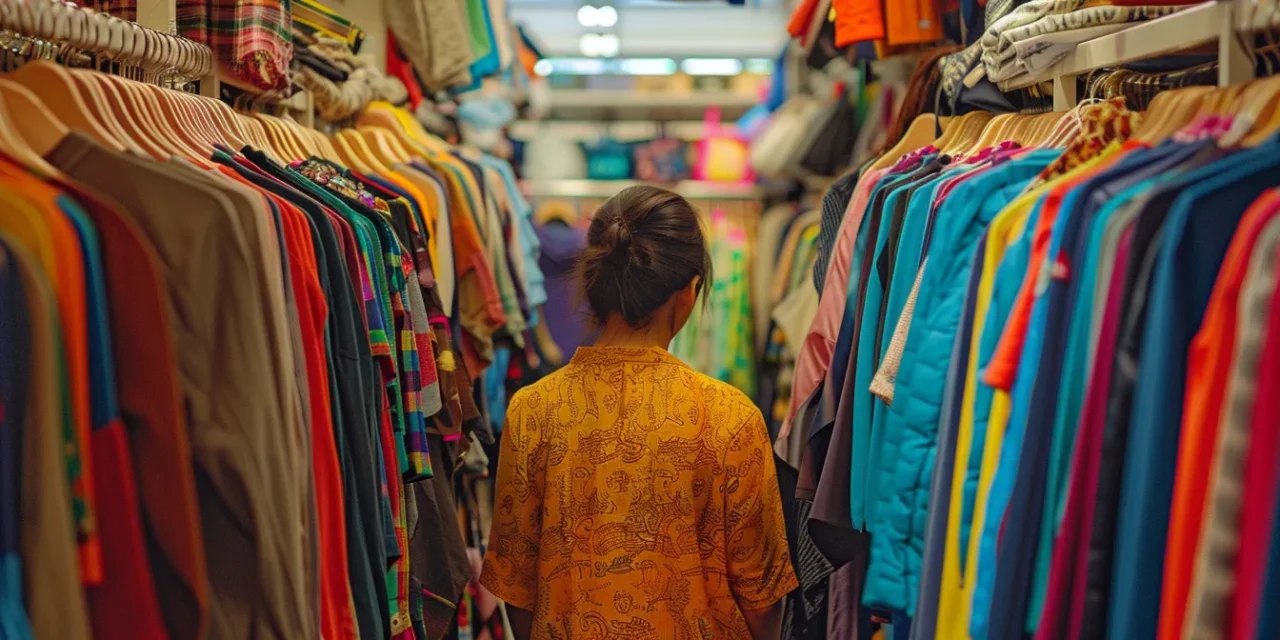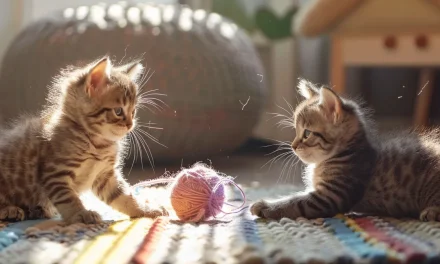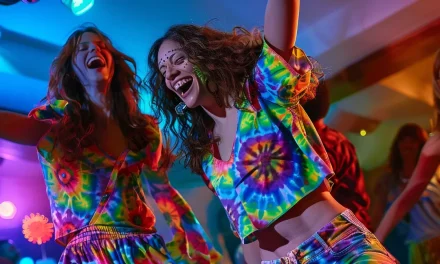Sustainable Thrifting Strategies for Eco-Conscious Shoppers
Are you feeling overwhelmed by the ever-expanding environmental toll of fast fashion? In this post, we delve into why turning to thrift stores such as charity shops and goodwill industries can be a game-changer for eco-conscious shoppers. I’ll guide you through finding top-notch vintage clothing, understanding the true value of second-hand brands over fast fashion, and give you practical strategies to ensure your thrifting is as sustainable as possible. By embracing the tips outlined here, you’ll not only revitalize your wardrobe but also contribute to a more sustainable world. Together, let’s explore how your shopping habits can make a lasting positive impact.
Understanding the Environmental Impact of Fast Fashion

As an advocate for sustainable fashion, I’ve observed firsthand the hidden costs of cheap clothing, where the allure of trendy, inexpensive garments masks the dire environmental and humanitarian consequences. Fast fashion has dramatically amplified the textile industry’s footprint, with clothing overproduction leading to vast water mismanagement and egregious pollution. This recklessness extends to the human toll of mass production, a grim narrative of compromised worker safety and rights. Each topic we’re about to discuss — from the careless use of water in textile manufacturing to the often overlooked benefits of clothing donation — not only deepens our understanding but paves the way for responsible consumerism.
The Hidden Costs of Cheap Clothing
In my journey toward more environmentally friendly shopping practices, I’ve discovered that the affordability of fast fashion comes at a high environmental price. These cheap clothing items, often produced at a staggering pace to keep up with the latest trends, contribute significantly to both the depletion of non-renewable resources and the accumulation of textile waste. By choosing to shop at consignment stores, which offer pre-loved items ranging from apparel to furniture, we as consumers can mitigate these environmental issues and support a more sustainable fashion cycle.
During my visits to organizations like The Salvation Army, I’ve seen how choosing to donate and purchase second-hand clothing can directly counter the wastefulness of fast fashion. Shopping from such establishments not only provides affordable options but also reduces the demand for mass-produced garments, thus cutting down on the extensive water pollution and energy consumption attributed to the creation of new clothing. This shift in shopping strategy paves the way to a more sustainable wardrobe without compromising on style or quality.
How Fast Fashion Contributes to Pollution
During my research into the detrimental effects of fast fashion, I’ve learned that the sector operates with a harrowing disregard for environmental sustainability. Garments are churned out rapidly to match transient style fads, which leads to a relentless accumulation of waste. As these clothes fall out of favor, an alarming quantity ends up in landfills where they contribute to a growing environmental crisis. I’ve become increasingly committed to advocating for sustainable shopping habits that respect our planet.
On my visits to local flea markets and thrift stores, I’ve witnessed how sustainable consumer practices can significantly reduce the pollution linked to the retail cycle of discard and replace. By selecting pre-owned items, shoppers inherently challenge the fast fashion model, fostering a marketplace that values reuse over waste. This approach not only extends the life of clothing but also alleviates the demand for new garments that, if unsold, contribute to the relentless increase of landfill waste.
The Human Toll of Mass Production
Through my experiences, I’ve seen the staggering human cost that underpins mass-produced garments like jeans and polyester blouses. Workers in factories often face long hours and perilously low wages as they churn out these items, including the iconic 501‘s that fill up countless shopping carts. By electing to purchase pre-owned household goods and clothing, we acknowledge the reality that our consumption habits can change the industry and improve the lives of workers across the globe.
I’ve witnessed how thrift shopping can serve as a powerful counteraction to the overproduction in the fast fashion industry, where quantity often eclipses the rights and well-being of laborers. The next time we contemplate adding another bargain item to our cart, let us consider how opting for second-hand goods can help alleviate the human toll associated with the mass production of apparel. It’s these choices that allow us to lead by example, advocating for a market that respects both people and the planet.
The weight of fast fashion rests heavily on our planet’s shoulders. In the turn of a page, let’s explore how thrifting offers not just relief, but a resurgence of responsibility.
Benefits of Thrifting for Eco-Conscious Shoppers

In my pursuit of a greener lifestyle, I have found thrifting to be an incredibly effective strategy. By selecting pre-loved dresses instead of new, we actively reduce waste, with every secondhand purchase diverting items from the landfill. It’s akin to a scavenger hunt through a vast inventory of unique finds, often with a better price point than retail. Beyond the thrill of the find at a local garage sale, thrifting supports community charities and saves crucial resources by giving clothes a new life, reducing the environmental toll of the fashion industry.
Reducing Waste Through Secondhand Purchases
In my own efforts to adopt more sustainable consumerism, I have found that secondhand purchases, particularly around festive periods like Christmas, offer an opportunity to save both money and the environment. Implementing thrifting strategies at such times reduces the usual consumption spike, with the added benefit of finding unique gifts that are often as good as new. This way, I bypass the chaotic aisles of fresh retail, sidestepping the impulse to buy and thereby lessening my own contribution to waste.
Moreover, using coupons and being strategic about my thrift store visits, I optimize savings and environmental impact. Thrifting transforms the act of shopping from passive consumerism to an engaged hunt for value, redefining the idea of what’s ‘new’ or desirable. Each time I select a pre-owned item, I feel a sense of accomplishment, knowing that my choices are part of a larger movement toward waste reduction, proving that one person’s past purchases can find renewed life in another’s responsible consumption.
Supporting Local Communities and Charities
Through my practice of selecting second-hand items, I’ve realized the profound impact thrifting has on local communities and charities. By upcycling clothes and other goods from thrift shops, not only do I introduce unique pieces into my life, but I also contribute to a cycle of giving that empowers these vital organizations. The connection is direct and meaningful: each purchase supports charitable programs that serve local community needs, reinforcing the value in every transaction.
Additionally, by choosing to donate my gently used items to these thrift stores, I contact a network that extends beyond mere commerce. This cycle of donation and purchase sustains community operations, ensuring that the benefits of my actions are passed on. Engaging in this eco-conscious exchange, I am reassured that my efforts to select previously loved clothes not only enrich my wardrobe but also bolster the overarching goals of local charities.
Saving Resources by Extending Garment Lifespans
In my progression towards a sustainable lifestyle, I’ve learned that the most impactful approach involves extending the lifespan of each item. Through purchasing secondhand, not only do I personally conserve the immense water and energy typically expended in the production of new clothing, but I also curb the influx of waste to our environment. This practice sends a powerful message to fast fashion industries that perpetuate a cycle of excess and disposability.
Adopting this eco-friendly strategy, I encourage others to appreciate the latent value in pre-owned items, embodying a shift that recasts sustainability as a daily practice rather than a sporadic gesture. By thoughtfully choosing clothing with longevity in mind, I actively disengage from the intense resource demand inflicted upon the earth by the constant turnover of apparel. This simple yet conscious effort aids in preserving our environment for future generations.
Turning our gaze from the environmental merits of thrifting, let us now discern how to sieve through the shelves for those coveted, quality finds. It’s a pursuit that demands a keen eye and patience, yet yields rich rewards.
Finding Quality Items in Thrift Stores

In my pursuit of sustainability through thrifting, I’ve learned a few key strategies for scoring high-quality finds. Whether rummaging through a thrift shop online or searching for second hand clothes online, identifying timeless pieces is essential. I assess each garment for condition and durability, ensuring resilience for continued wear. Understanding fabric types also plays a pivotal role in the longevity of thrift store treasures, from thrift books online to classic wardrobe staples. My focus on these aspects not only enriches my shopping experience but also supports a more sustainable lifestyle.
Identifying Timeless Pieces
In my careful navigation through various thrift websites, I’ve honed an ability to spot timeless pieces amid a sea of choices. When I sift through thrift clothes online, I look for classic designs that defy the shifting currents of fashion trends. Quality fabric, a well-constructed fit, and a versatile silhouette – these are the hallmarks of clothing that outlasts seasons. Such finds are not only a triumph for my personal style but also affirm my commitment to sustainability, moving away from the disposable nature of fast fashion.
As a seasoned shopper of online used clothing, I’ve learned that the best thrift shopping online is about discerning which items stand the test of time. Recognizing staple garments, like a crisp white shirt or sleek black trousers, can transcend the fashion cycle, allowing for a variety of outfits through simple recombination. This strategic approach to selecting thrift clothes not only enriches my wardrobe but also supports a sustainable consumption model, one that benefits the environment and my personal aesthetics.
Assessing Garment Condition and Durability
In my thrifting adventures, I’ve learned to meticulously assess the condition and durability of secondhand clothes. When I’m browsing through thrift shops, I pay close attention to the quality of the stitching, the integrity of the fabric, and any signs of wear or damage. This careful scrutiny helps me find pieces that not merely survive but thrive through multiple seasons, reinforcing the ethos of thrift shopping as a sustainable choice.
Additionally, I’ve found that durability goes hand-in-hand with timelessness when it comes to second hand shops. Fabrics that handle wash and wear well, such as denim and wool, are often my go-tos. I carefully inspect these materials for resilience, stretch, and colorfastness, ensuring that my thrift store discoveries will serve as long-lasting additions to my wardrobe while advancing my commitment to reducing environmental impact.
Understanding Fabric Types for Longevity
In my journey through various secondhand shops, I’ve learned the importance of understanding fabric types for ensuring the longevity of secondhand clothing. Fabrics like cotton, linen, and wool not only offer durability but are also more likely to have been well-made. When I sift through the racks at my local Vincent de Paul thrift or Salvation Army thrift, I take a moment to feel the material, checking for a robust texture that indicates quality production, which is indicative of the best thrift finds that withstand time and use.
At these secondhand venues, I prioritize natural fibers that are known for their lasting qualities. Synthetic fabrics, while sometimes durable, may not age as gracefully. Shopping at secondhand clothing stores has taught me that a garment’s longevity is significantly influenced by its fabric composition. By choosing pieces made from sturdy materials, I contribute to a sustainable wardrobe that resists fast fashion‘s transient nature, ensuring my attire remains both fashionable and ecologically responsible for years to come.
The hunt for quality is relentless, unforgiving. Armed now with the knowledge, let’s sharpen our skills for sustainable thrifting.
Tips for Successful Sustainable Thrifting

As an environmentally aware consumer, I’ve learned that thriving in the world of thrift shopping requires a well-thought-out strategy. In the following sections, we’ll delve into concepts like planning your thrift shopping strategy, creating a sustainable wardrobe on a budget, navigating thrift stores effectively, and knowing what to avoid when thrifting. Each of these key areas will equip you with the practical knowledge to curate an eco-friendly wardrobe that’s both stylish and fiscally responsible, demonstrating the intersection of ethics and aesthetics in everyday life.
Planning Your Thrift Shopping Strategy
In my journey of embracing sustainable thrifting, I’ve learned the importance of having a clear plan before setting foot in a store. This strategy involves setting specific goals for my wardrobe, such as pinpointing the missing pieces that would maximize versatility or identifying items due for replacement. By entering the thrift store with a focused intention, I ensure that my purchases are purposeful, aligning with my commitment to sustainability and negating the temptation of impulsive buys.
Moreover, I’ve found it essential to prioritize quality over quantity, seeking garments that promise durability and timelessness. Before I embark on my thrift shopping expeditions, I take stock of the materials and styles that best suit my existing wardrobe. This preparedness allows me to seamlessly integrate second-hand finds into my personal style, ensuring each piece is not just a sound investment but a step towards reducing my environmental impact.
Creating a Sustainable Wardrobe on a Budget
In my efforts to foster a sustainable lifestyle, I have found that building a wardrobe on a budget is not only practical but also environmentally prudent. By selectively purchasing secondhand clothing, I’m able to acquire quality items at a fraction of the cost, reducing my ecological footprint and supporting the circular fashion economy. Keeping an eye out for durable fabrics and timeless designs, I curate a collection that extends the lifecycle of garments and maintains my personal style without the financial strain of buying new.
My approach emphasizes the need to avoid fast fashion‘s lure of cheap, disposable items. Instead, I prioritize investment in versatile pieces that harmonize with my existing wardrobe to minimize waste. Thrifting with a budget-conscious yet discerning eye has empowered me to make informed choices, reinforcing the benefits of a mindful consumption pattern that positively impacts my wallet and the planet.
Navigating Thrift Stores Effectively
In my approach to navigating thrift stores effectively, I concentrate on visiting various shops to understand their layout and inventory cycles. This knowledge allows me to time my visits to coincide with fresh stock arrivals, elevating my chances of discovering high-quality sustainable fashion pieces. By building a rapport with the staff, I often gain insightful tips on the best days to shop and may even get a heads-up on upcoming sales or special thrift store events.
I have also learned the importance of a methodical scan in each thrift store aisle, which demands patience and a keen eye for detail. Preferring quality over quantity, I inspect each item for signs of wear and ensure it fits into my wardrobe seamlessly. This strategy not only aids in finding desirable and long-lasting apparel but reinforces my commitment to adopting sustainable shopping habits that align with environmental stewardship.
Knowing What to Avoid When Thrifting
In my ventures into sustainable thrifting, I’ve learned vigilance against the allure of sheer quantity, which can lead to purchasing items that end up unused or discarded. It is essential to resist the temptation of seemingly good deals that don’t align with one’s personal style or the practical needs of one’s wardrobe. Apart from cluttering our spaces with unworn clothes, these purchases ultimately undermine the principles of sustainable shopping, contributing to the very waste we aim to prevent.
I also steer clear of damaged or excessively worn items that, while inexpensive, would be only a temporary fixture in my collection. This awareness comes from recognizing the difference between a piece that can be refreshed with minor repairs and those that are beyond practical restoration. Investing time in carefully inspecting each garment ensures that my thrifting choices remain consistent with an eco-conscious lifestyle and don’t inadvertently contribute to the cycle of fast fashion.
Armed with your newfound sustainable thrifting strategies, you stand at the threshold of further creative endeavor. Let us now turn our attention to upcycling, where the true potential of your thrifted treasures begins to unfold.
Upcycling and Repurposing Thrifted Finds

Embracing sustainable thrifting extends beyond purchasing pre-loved items; it involves creative reinvention. I often engage in simple DIY projects to refresh clothing, thereby breathing new life into my thrifted finds. The transformation of garments into new styles allows for a personalized wardrobe that stands out, underscoring my dedication to both fashion and environmental responsibility. Knowing which tools are essential for upcycling success ensures that my projects are not only enjoyable but also effective. By sharing these upcycled creations with the community, I contribute to a culture of sustainability and innovation that resonates with eco-conscious shoppers.
Simple DIY Projects to Refresh Clothing
In my practice of rejuvenating pre-owned clothing, I’ve embraced simple DIY projects like hand-embroidery to add a personal touch. By threading my needle with vibrant colors and patterns, I transform stale designs into bespoke pieces. It is a rewarding process, both for the environment and my creative spirit, one that emphasizes the unique character of my thrifted wardrobe.
Another venture I’ve found gratifying is dyeing faded garments to restore their vibrancy or to give them an entirely new hue. This approach has saved many of my thrift store finds from becoming dormant in the closet. Applying non-toxic dyes to cotton shirts or linen dresses, I have extended their lifecycle and reduced the environmental impact of manufacturing new clothing.
Transforming Garments Into New Styles
In my experience with upcycling, I’ve found that transforming garments into new styles is a creative and sustainable way to revitalize my wardrobe. By repurposing a dated dress into a chic top or converting old jeans into stylish shorts, I give these clothes a second chance at life. It’s a practical and fulfilling solution that aligns with eco-conscious shopping and reduces the need for new resources.
Through my endeavors in garment transformation, I’ve learned that some minor adjustments can significantly alter a piece’s appearance. By adding a modern hemline or introducing a fresh color block, I’ve successfully reinvigorated thrifted finds. These modifications cater to current trends, eliminate waste, and evolve personal style without environmental compromise.
Essential Tools for Upcycling Success
In my experience, the success of an upcycling project largely hinges on utilizing the right tools. A reliable sewing kit, complete with various needles, sturdy thread, and sharp scissors, is invaluable for mending and modifying thrifted items. For those who like to personalize their finds, items such as fabric paint and quality sewing machines are also indispensable tools, enabling both novices and seasoned upcyclers to execute their creative visions with precision.
I’ve found that having a well-curated set of tools, including a seam ripper, measuring tape, and an assortment of fasteners, has allowed me to tackle a range of upcycling tasks with confidence. These essentials ensure that I can efficiently refresh an outdated garment or repurpose materials, contributing to a sustainable thrifting practice that aligns with eco-conscious living while fostering a sense of self-sufficiency in my fashion endeavors.
Sharing Upcycled Creations With the Community
Engaging with the community through the practice of sharing my upcycled thrift store creations has been profoundly rewarding. I’ve seen how conducting workshops or even a simple show-and-tell at local events can inspire others to rethink their approach to fashion and consumption. By showcasing the potential of reimagined clothing, I not only encourage sustainable habits but also foster a collaborative spirit centered around eco-friendly practices.
When I share my latest upcycled project on social media or in community groups, the feedback is often full of excitement and curiosity. This interaction not only promotes the broader concept of sustainable thrifting but also helps others envision practical applications of upcycling in their own lives. Witnessing the ripple effect of my efforts as people adopt similar practices affirms the value of community engagement in supporting a sustainable lifestyle.
We’ve mastered the art of giving old treasures new life. Now, let’s venture into the digital marketplace, where vintage finds await at the click of a button.
Exploring Online Thrifting Platforms

In the digital age, online thrifting platforms have become an invaluable resource for eco-conscious shopping. As we delve into trusted websites and apps, I’ll guide you through safe and secure secondhand shopping strategies and the best practices for selling and donating items to promote sustainability. We’ll also look at how to foster a vibrant online thrifting community. These tools and tips are essential for anyone looking to make environmentally sound and stylish choices.
Trusted Websites and Apps for Secondhand Shopping
In my exploration of sustainable fashion, I’ve discovered trusted online platforms that have revolutionized the thrift shopping experience. Websites like thredUP and Poshmark, along with apps such as Depop and Vinted, are cornerstones of the secondhand shopping community, offering a vast array of pre-loved items. These platforms not only facilitate the discovery of unique eco-friendly wardrobe pieces but also underscore the simplicity of selling and swapping garments, thus nourishing a sustainable clothing cycle.
I’ve found particular value in the verification process and user rating systems these sites employ, enhancing the security and reliability of transactions. Engaging with these secondhand shopping sites has allowed me to establish a more sustainable wardrobe without sacrificing style or quality. They act as virtual thrift stores, bringing the hunt for high-quality, affordable fashion to my fingertips while firmly rooting the practice of thrifting in ethically conscious consumerism.
Tips for Safe and Secure Online Purchases
In my rigorous quest for sustainable fashion, I’ve cultivated measures to ensure online thrifting is not just rewarding, but secure. To preserve both the integrity of transactions and personal information, I always recommend using secure payment methods on platforms with robust privacy policies. It’s essential to review a seller’s history and feedback on these sites, as it reflects their reliability and the quality of the items they list, helping to mitigate potential issues with purchases.
Furthermore, as a savvy eco-conscious shopper, I’m meticulous in scrutinizing product descriptions and images for authenticity and condition. Direct communication with sellers can address any uncertainties and provide a clearer idea of the product’s real-world application. These proactive steps are critical in fostering a safe online environment, empowering fellow thrifters to make purchases that are as reliable as they are sustainable.
Selling and Donating to Promote Sustainability
In my commitment to advancing sustainable practices, I have found considerable value in selling and donating items through online thrifting platforms. This ethos not only creates space in my home but also ensures that the clothes and goods I once cherished can serve others, thereby extending their lifecycle and lessening environmental impact. Notably, these actions diminish the constant need for new production, fundamentally supporting a more sustainable and circular economy.
Undertaking the role of a seller or donor on digital thrift stores such as eBay and Mercari, I contribute to the reduction of waste and the promotion of reuse. I have seen how each piece I pass on can find a new home, which is both rewarding and integral to conserving resources. By embracing this approach, I actively participate in a community intent on sustainable living while aiding in the reduction of the carbon footprint associated with the fashion industry.
Building an Online Thrifting Community
My experience has shown that fostering a robust online thrifting community catalyzes the shared values of sustainable living and conscious consumerism. Facilitating discussion forums and social media groups, I’ve engaged with like-minded individuals, together we exchange insights on eco-friendly fashion finds, making our collective pursuit of sustainability a unifying and enriching endeavor.
By contributing to digital platforms dedicated to thrift shopping, I’ve witnessed the powerful role they play in advocating for the environment and supporting ethical shopping choices. Sharing success stories and thrift flips inspires others to join the movement, and together we amplify the impact of sustainable thrift shopping, creating a ripple effect that transcends individual efforts and blossoms into community-wide change.
Frequently Asked Questions
How does fast fashion impact the environment?
Fast fashion significantly harms the environment through excessive water consumption, pollution from non-biodegradable materials, and greenhouse gas emissions in its production and disposal cycles.
What are the ecological benefits of thrifting?
Thrifting contributes to reduced waste, conservation of resources, and a decrease in pollution, ultimately supporting biodiversity and sustainable consumption practices.
How can I identify high-quality items in thrift stores?
Identifying high-quality items in thrift stores involves inspecting items for materials, brand names, craftsmanship, and overall condition; these indicators often reveal the item‘s value, longevity, and authenticity.
Do you have any tips for sustainable thrifting?
Sustainable thrifting hinges on selecting high-quality items, supporting local stores, and donating unused garments, thereby reducing waste and promoting a circular fashion economy.
Where can I find online platforms for thrifting?
For thrifting online, popular platforms include eBay, Depop, Poshmark, thredUP, and Etsy, each offering a wide selection of second-hand goods and vintage items.










